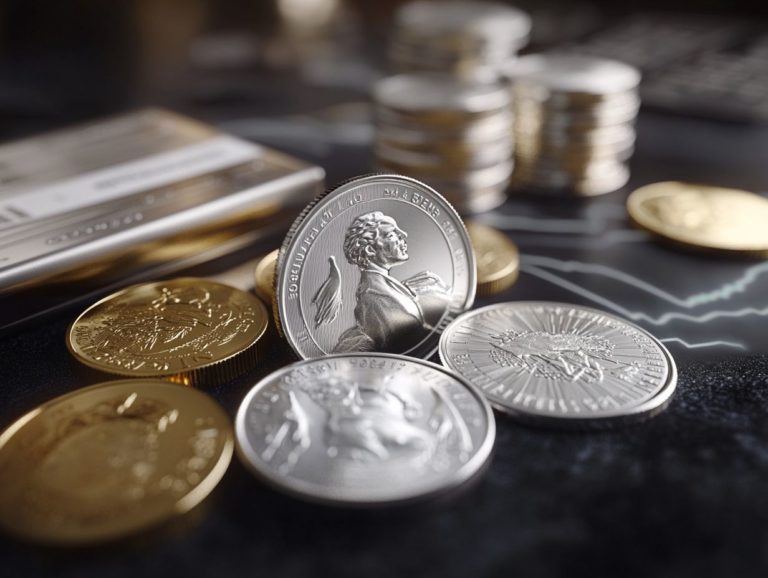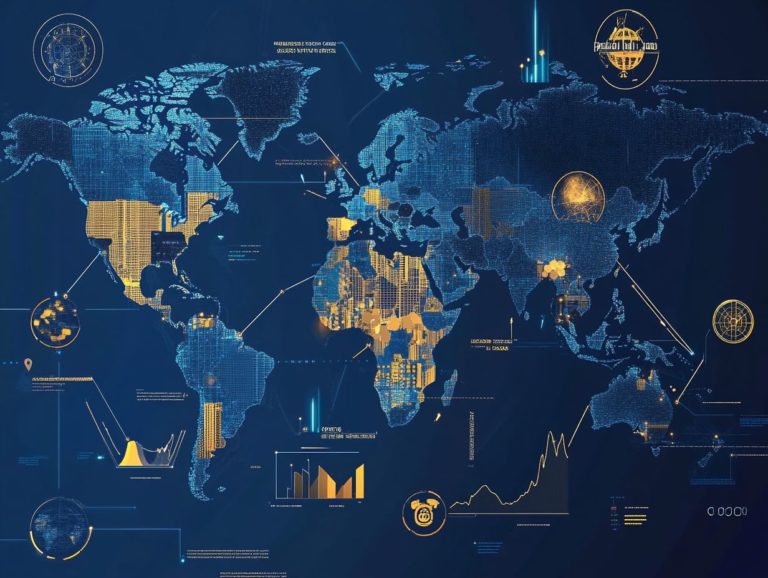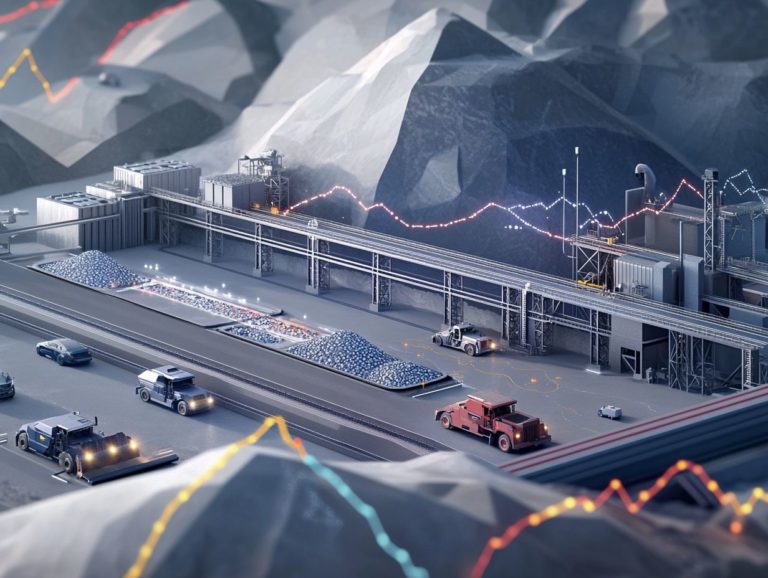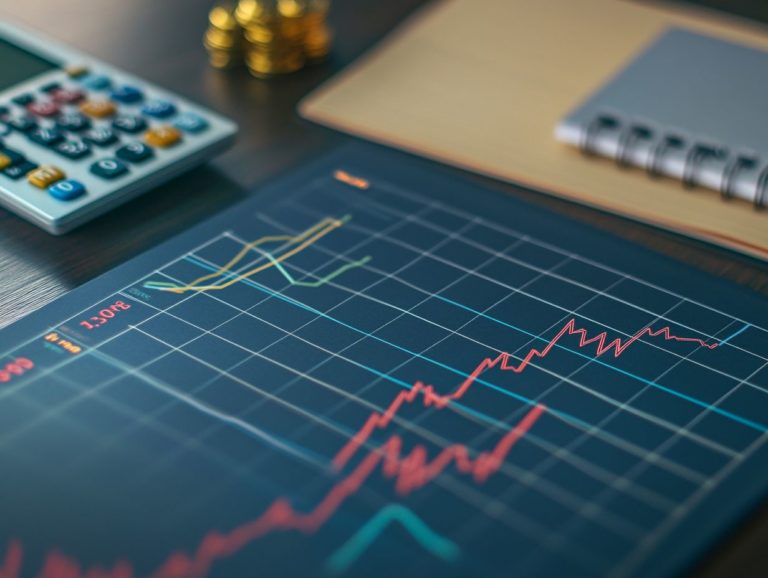Palladium Market Overview: Key Insights
The palladium market has been navigating a landscape of significant fluctuations, influenced by a complex interplay of supply and demand dynamics, recent trends, and the broader global economy.
This overview reveals the key players shaping the market and the various elements affecting its pricing and availability.
From major producers to environmental factors, this discussion offers a comprehensive look at what drives the palladium market and provides insights into its future trajectory.
Explore these critical aspects and uncover what lies ahead for both palladium enthusiasts and investors.
Contents
- Key Takeaways:
- Current State of the Palladium Market
- Key Players in the Palladium Market
- Factors Affecting the Palladium Market
- Future Outlook for the Palladium Market
- Predictions and Forecasts
- Frequently Asked Questions
- What s happening in the Palladium market right now?
- Why is Palladium considered a valuable metal?
- What are the top players in the Palladium market?
- How has the Palladium market been affected by the COVID-19 pandemic?
- What are the future projections for the Palladium market?
- How can investors get involved in the Palladium market?
- Conclusion
Key Takeaways:
- Palladium market is experiencing high demand due to its use in catalytic converters for automobiles and its scarcity as a natural resource.
- Major players in the market include Russia, South Africa, and China as top producers, and the United States, Europe, and Japan as major consumers.
- The future of the palladium market is dependent on economic, political, and environmental factors, with predictions indicating continued high demand and potential supply challenges.
Definition and Overview
Palladium, a precious metal that belongs to the platinum group metals (PGMs), has caught attention in recent years. Its extensive applications, particularly in the automotive sector where it’s essential for catalytic converters, are driving a surge in demand.
Palladium plays a critical role in reducing automotive emissions. It also finds increasing use in electronics manufacturing and jewelry.
This metal is celebrated for its impressive catalytic properties, turning harmful gases into less toxic ones and enabling manufacturers to comply with stringent environmental regulations. Its resistance to corrosion and excellent thermal conductivity further enhance its value in various high-tech applications.
The recent boom in electric vehicle production has increased interest in the palladium market, as these vehicles often rely on it alongside other PGM catalysts to optimize fuel efficiency.
With global economies making a concerted push toward greener technologies, the demand for palladium is expected to rise. Stay alert to market trends and watch for supply chain challenges; it could mean big opportunities for you!
Current State of the Palladium Market
The current state of the palladium market presents a complex situation marked by rising demand, fluctuating prices, and supply constraints, all significantly shaped by geopolitical factors and industrial needs.
The automotive industry has experienced a marked increase in palladium demand, as stringent emissions regulations push car manufacturers to embrace advanced technologies that heavily depend on this precious metal.
As a result, the price of palladium has undergone considerable volatility, positioning it as a key subject for market analysis.
Supply and Demand Factors
The supply and demand factors influencing the palladium market are complex and multifaceted. Global production rates, recycling initiatives, and rising consumption in sectors like automotive and electronics play significant roles.
These elements interact to create a vibrant landscape for palladium, where shifting production levels in key mining regions can dramatically alter market availability.
Robust recycling efforts, especially from automotive catalytic converters, provide a secondary supply chain that affects overall market dynamics.
As industries increasingly embrace palladium for their cutting-edge technologies, the competition for this precious metal intensifies, further shaping the global palladium market.
Understanding these diverse influences is essential for you as a stakeholder, especially when monitoring price movements and identifying investment opportunities in this critical sector.
Recent Trends and Developments
Recent trends in the palladium market reveal a notable shift in demand and rising prices, primarily fueled by the automotive industry’s move toward cleaner technologies and stricter emissions regulations.
This shift is transforming the industry as manufacturers increasingly depend on palladium in catalytic converters, which are devices in cars that reduce harmful emissions, to meet these rigorous environmental standards.
While the uptick in palladium prices reflects this growing demand, it also introduces a range of challenges, especially for smaller players in the automotive sector. Understanding what factors influence palladium prices can provide valuable insights into these dynamics.
As companies strive to balance embracing new technologies with controlling costs, the palladium market is evolving rapidly, shaped by global supply chain dynamics and potential shifts toward alternative metals. For stakeholders, understanding 5 key insights on palladium investments is essential for navigating the complexities of this vital market.
Key Players in the Palladium Market
The palladium market features several key players, including major producers and suppliers who significantly influence the dynamics of palladium supply and demand across various regions, particularly in Russia and South Africa.
Understanding their roles can provide valuable insights into market trends and fluctuations.
Major Producers and Consumers
Key players in the palladium market include Russia and South Africa, which dominate production. The automotive and electronics industries emerge as significant consumers in the global palladium market.
These leading nations account for a substantial share of the world s palladium production, greatly influencing pricing and availability. For example, Russia’s state-owned entities are pivotal in mining and exporting this precious metal, while South Africa s diverse mining operations ensure a steady supply.
On the consumer side, the automotive sector stands out, as palladium plays a crucial role in catalytic converters. The electronics industry has also ramped up its palladium consumption for various components, highlighting the interconnectedness of these producers and consumers.
It s fascinating to see how fluctuations in one sector can send ripples throughout the global market.
Factors Affecting the Palladium Market
Several factors influence the palladium market, including economic and political dynamics, environmental considerations, and risks from price changes.
These elements can significantly affect your investments and production strategies in this increasingly complex landscape.
Economic, Political, and Environmental Factors
Economic conditions, political instability, and environmental regulations are pivotal elements that shape the palladium market, influencing both supply chains and end-user demand.
Consider the recent economic downturn in key markets; it has prompted fluctuations in palladium prices, impacting automotive manufacturers who depend heavily on this precious metal for catalytic converters. For those looking to navigate these changes, exploring 5 ways to invest in palladium without buying metal can introduce various strategies. Political tensions in major producing countries, like Russia and South Africa, introduce layers of uncertainty and risk, often resulting in supply shortages.
Stricter environmental regulations are driving industries toward greener technologies, necessitating a greater intake of palladium. A compelling case study highlights how automakers are adapting their supply chains in response to fluctuating production costs while striving to meet emissions standards. Additionally, understanding silver investment key market indicators can further illustrate how interconnected these factors truly are.
Future Outlook for the Palladium Market
The future outlook for the palladium market is influenced by evolving trends, anticipated market opportunities, and strategic investments that have the potential to redefine the palladium supply chain and its significance across various industries.
By staying informed about these developments, you can position yourself to capitalize on emerging possibilities in this dynamic landscape. Don t miss out on opportunities keep an eye on the evolving palladium landscape!
Predictions and Forecasts
Predictions and forecasts for the palladium market suggest you’ll see a continued surge in demand and potentially rising prices, all shaped by historical pricing trends and market insights that hint at future dynamics.
Several factors contribute to the palladium price outlook, particularly the automotive industry’s shift to cleaner technology and the tightening of emission regulations. Emerging markets are poised to significantly drive demand growth for palladium as more countries begin to adopt catalytic converters, devices that reduce harmful emissions in vehicles, in their automobiles. For those interested in investing, understanding what to know about palladium investment pools is crucial. The post-pandemic economic recovery could also boost demand, with increased industrial activity likely leading to higher palladium consumption.
Monitor geopolitical developments as well; disruptions in mining supply chains could lead to price fluctuations. For those interested in this area, investing in precious metals: market insights highlights exciting times ahead for the palladium market, emphasizing its vital role not only in the automotive sector but also in electronics and jewelry.
Frequently Asked Questions
What s happening in the Palladium market right now?
The palladium market is currently experiencing high demand and low supply, leading to a surge in prices. This is due to several factors, including stricter emission regulations and increasing demand for hybrid cars.
Why is Palladium considered a valuable metal?
Palladium is considered a valuable metal due to its unique properties and uses. It is highly resistant to corrosion and has a high melting point, making it suitable for use in industrial processes and electronic components. It is also a key component in catalytic converters, which are crucial for reducing emissions in vehicles.
What are the top players in the Palladium market?
The top players in the palladium market include major mining companies such as Anglo American Platinum, Impala Platinum Holdings, and Norilsk Nickel. Other important players include automotive manufacturers and jewelry companies that use palladium in their products.
How has the Palladium market been affected by the COVID-19 pandemic?
The pandemic caused immediate disruptions to the palladium market. The closure of mines and disruptions in supply chains led to a decrease in production, while the economic downturn caused a decline in demand for palladium in industries such as automotive and jewelry. However, recovery is on the horizon as industries start to bounce back.
What are the future projections for the Palladium market?
The future projections for the palladium market are optimistic, with experts predicting a continued increase in demand due to stricter emission regulations and the growth of the electric vehicle market. However, potential shortages in supply and the uncertain economic climate could also affect the market in the long term.
How can investors get involved in the Palladium market?
Investors can get involved in the palladium market through various means, including purchasing physical palladium, investing in palladium mining companies, or trading palladium futures and options on commodity exchanges. It is important for investors to do thorough research and understand the risks involved before investing in the market.
Stay updated and consider joining the exciting world of palladium investment!
Conclusion
The palladium market plays a crucial role in various industries, and staying informed about its trends can offer significant opportunities for investors. Keep an eye on developments and consider how you can be part of this dynamic market.














